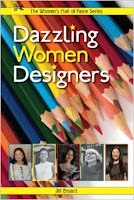Razorbill
978-0-670-06707-7
310 pp.
Ages 12+
January 2016
If you thought the darkness and powerlessness of Eric Walters’ first two books in his apocalyptic The Rule of 3 series (The Rule of Three, Razorbill, 2014; Fight for Power, Razorbill, 2015) were staggering, then Will to Survive will seem enervating. But, as is said, it's always darkest before the dawn, and Eric Walters is nothing but hopeful in all his writing and definitely in Will to Survive.
The neighbourhood in which sixteen-year-old Adam Daley and his family, friends and others–about sixteen hundred individuals–have created in the aftermath of a power outage of epic proportions is establishing all the right stuff on which civilizations have been founded: government by committee, citizenship, security, food sharing, social welfare, medical care, etc. But it's been a hard road, with tough decisions regarding security versus social responsibility, survival versus humanity, and life or death.
I know that our neighborhood was a small sliver of civilization in a land where civility had been lost. Here we were surrounded by twenty-foot walls, protected by armed guards on all sides; we had food, shelter and a layer of order and fairness. In here was safe. Beyond was uncertain. No, not uncertain–wild and dangerous and dog-eat-dog. (pg. 83-84)Unfortunately that danger encroached on Adam’s feelings of safety at the conclusion of Fight for Power, and Will to Survive begins in the aftermath of Adam's killing of two men, in self-defense, after he was kidnapped by former ally Brett who'd joined with the bandits of the Division. Even after the neighbourhood sends teams to destroy the compound of the Division, Adam is haunted by what he had to do and is plagued by Brett’s suggestion that he too has become a monster.
But Adam doesn’t have many opportunities to talk to counsellor Maureen about the trauma or spend more time with girlfriend Lori before the neighbourhood is hit by sniper fire that kills three guards. Pinpointing the origin of the shots as the condo tower outside of the community, and concerned that Brett and his men are behind the attack, the neighbourhood committee, based on Adam’s suggestion, decide to extend the wall outward to engulf the condo community, offering them both services and training to keep them safer.
After more aerial reconnaissance that is both beneficial and terrifying in what they discover, the neighbourhood begins efforts to join with other communities, including one based at the island airport, one at an oil refinery and another at a hospital.
We can stop being a simple star and start to become a constellation of stars, the center of a series of connected neighborhoods. (pg. 110)But you know sociopathic Brett is going to raise his evil head again and he does, targeting the neighbourhood physically and Adam psychologically, playing their compassion as a weakness. Unfortunately for him, Brett doesn’t recognize that kindness can be very fortifying too.
Will to Survive is definitely an action-packed adventure, a highly plot-driven story, but the power of Eric Walters’ characters kept me most interested. The astute strategist, Herb, is one of my favourites. Knowing that the world might never get back to normal (“There is a very long end game here”; pg. 202), Herb lends his wise guidance to the neighbourhood and its new allies and mentors Adam in becoming a new leader. His wealth of knowledge and astounding understanding of the human psyche makes Herb the ideal person to spearhead efforts in a crisis. But Herb is the real thing, not a superhero; he is a man with vulnerabilities, who can help make Adam realize what he himself has to offer. Will to Survive is a coming-of-age story about Adam, just as it is for a post-apocalypse world that needs to recognize its weaknesses and play to its strengths in order for growth to happen. Growing up can be scary but it can also be heartfelt and ultimately advancing.
















































































